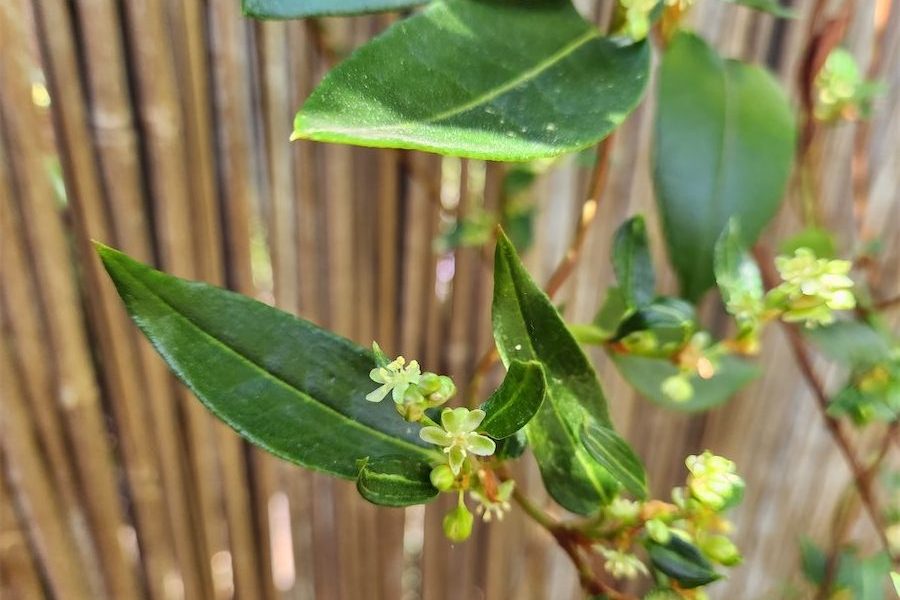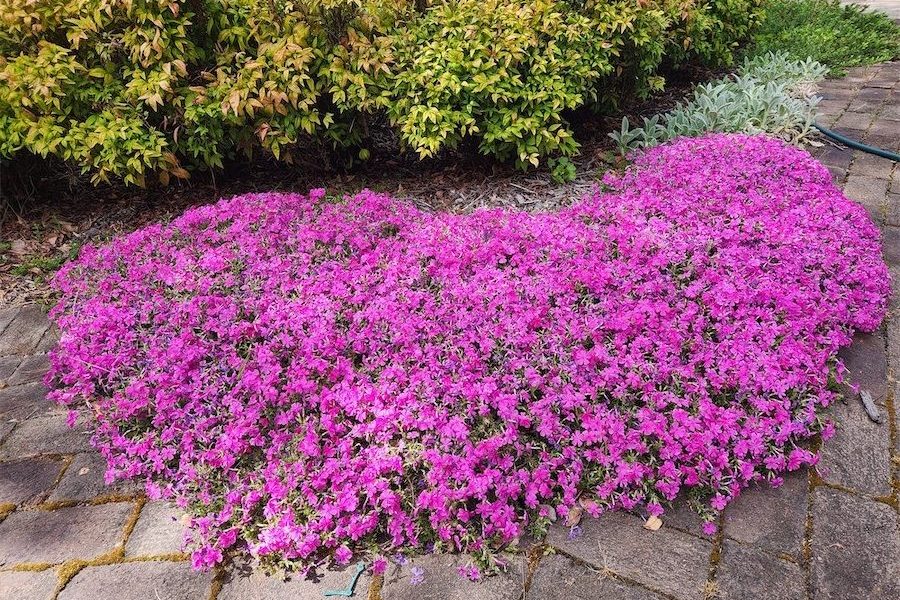
If there’s a small area in the garden for a gentle, scrambling climber that likes a little shade, then the evergreen and native Macquarie vine is a terrific choice, says gardening writer JACKIE WARBURTON.
The Macquarie vine (Muehlenbeckia gunnii) looks delicate, but is tough enough to grow and flower well with very little care.

The growth can be fast. It is a self-supporting twining plant that will climb over shrubs if it is allowed to, but training it to a screen will produce an evergreen wall, at least three metres long, in no time.
The flowers, which keep coming for months, are sweet smelling and appear in small clusters in spring.
Another native to try would be M. adpressa that is endemic to Victoria and SA. It’s better grown as a ground cover or climber and may need protection from frosts. Plant one when the soil has warmed in October.
My favourite of all the muehlenbeckia to grow is not a native. The maidenhair creeper (M. complexa) can be weedy if grown in a warmer climate than ours. I recommend putting it in the garden only where it can be contained or kept in a pot.
If pruned properly, it can create a thin evergreen screen. This variety is popular for topiary shapes in the garden and valued for its tiny foliage and self-supporting strength.

AS we approach the short end of winter, the wattles and groundcovers, such as alpine phlox (Phlox subulata), are starting to bloom.
Alpine phlox can fill rockeries and hard areas where very little can grow. If planted when young, they can grow up to a metre wide and its spectacular flowering lasts for many weeks from the end of winter through to spring.
The colour range varies from white to purple and every shade of pink in between. Planted en masse, they make a spectacular sight.
While drought hardy once established, it can look a bit average in the warmer months as an evergreen plant, but worthy of growing in our climate.
Also in the phlox family are other perennials that grow well including the ground cover tall phlox (Phlox paniculata). It has self-supporting stems that grow to about 30 centimetres tall. Its flowers come as long-lived clusters of heads in spring and summer. They’re also terrific as cut flowers for a vase.
NOW’S a good time to start to sow seeds for spring planting. Most seeds need 23C, light and moisture to germinate and grow.
Depending on the seeds, germination can take a few days or a few weeks, so do a little research on what you want to grow.
The most popular and easy seeds for beginners would be tomato seeds.
They need a potting mix that has equal parts core peat, bark fines and sand or a commercial seed-raising mix, but importantly no fertiliser until there is germination of the seed.
Place seed on top of potting mix and press down gently. Cover lightly with potting mix or washed sand and place on a heat bed. Once there are three sets of leaves, seedlings can be potted into bigger containers ready for planting out in November when the frosts have passed.
Others to try at home are the large seeds of zucchini, pumpkin and beans. They can be planted to the depth of the seed and covered. Feed with seaweed solution every two weeks to keep them growing fast.
Jottings
- For blue hydrangeas, water with liquid aluminium sulphate.
- Spray stone fruit for preventive fungal disease, such as peach leaf curl.
- Turn in a green manure crop if it begins to flower.
Who can be trusted?
In a world of spin and confusion, there’s never been a more important time to support independent journalism in Canberra.
If you trust our work online and want to enforce the power of independent voices, I invite you to make a small contribution.
Every dollar of support is invested back into our journalism to help keep citynews.com.au strong and free.
Thank you,
Ian Meikle, editor





Leave a Reply